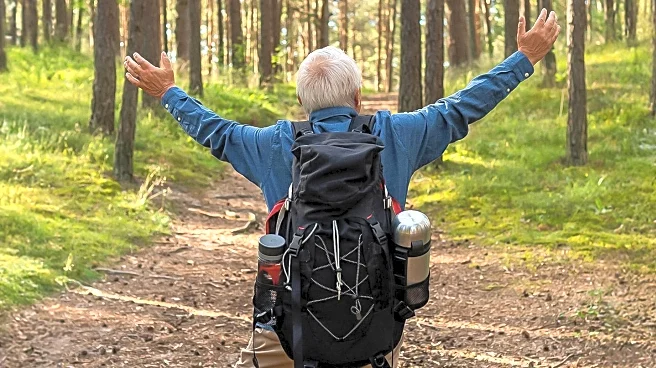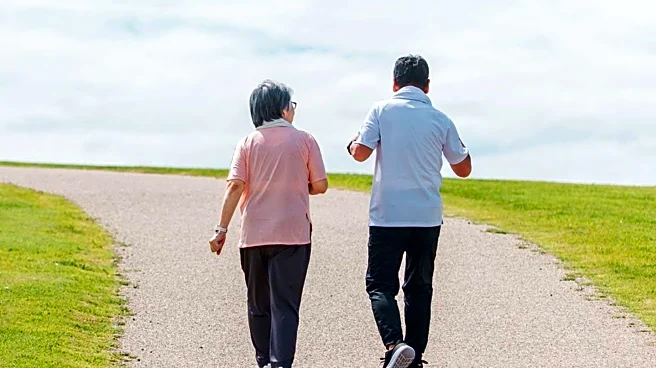What's Happening?
Recent research has highlighted the physical health benefits of 'forest bathing,' a practice known as shinrin yoku in Japan. This involves spending time in nature, engaging in mindful activities such as deep breathing and appreciating the natural surroundings. A study conducted by Iwao Uehara at Tokyo University of Agriculture involved 36 adults aged 60 to 80 with high blood pressure. Participants spent time in a forest setting, engaging in activities like gentle hiking, mindfulness meditation, and Qigong. The study found significant improvements in blood pressure, inflammation markers, and heart rate variability among those who participated in forest bathing compared to a control group in an urban setting.
Why It's Important?
The findings underscore the potential of forest therapy as a cost-effective and accessible intervention for managing high blood pressure and improving overall cardiovascular health. This research adds to the growing body of evidence supporting the health benefits of spending time in natural environments. As healthcare costs continue to rise, such non-pharmacological interventions could offer significant benefits to public health, particularly for older adults who are more susceptible to hypertension and related conditions. The study also highlights the importance of integrating nature-based therapies into wellness and healthcare practices.
What's Next?
Further research could explore the long-term benefits of forest bathing and its potential applications in preventive healthcare. Healthcare providers might consider recommending nature-based activities as part of holistic treatment plans for patients with hypertension and other stress-related conditions. Additionally, urban planning could incorporate more green spaces to facilitate access to nature for city dwellers, potentially improving public health outcomes.
Beyond the Headlines
The study raises questions about the broader implications of lifestyle and environment on health. It suggests a need to reevaluate how modern living environments impact well-being and how integrating natural elements into daily life could mitigate stress and improve health outcomes. This could lead to a cultural shift towards valuing and preserving natural spaces within urban areas.












